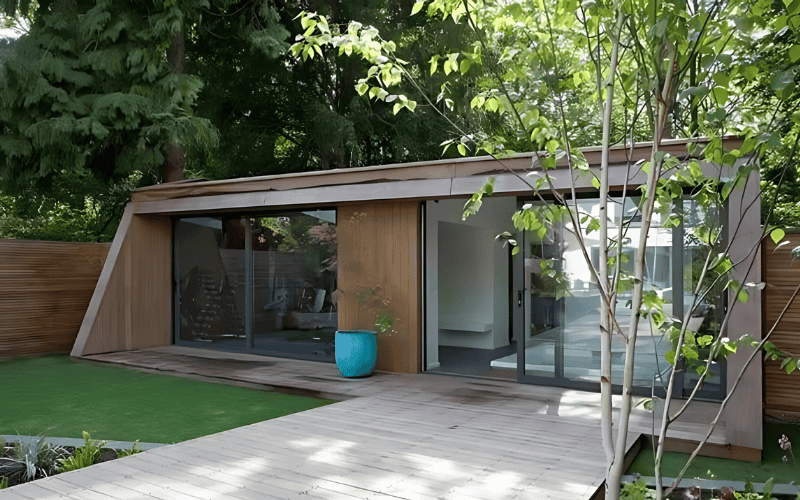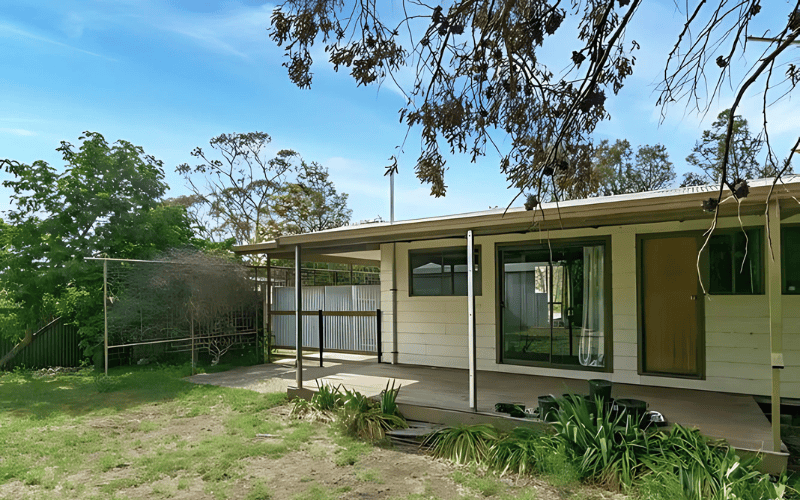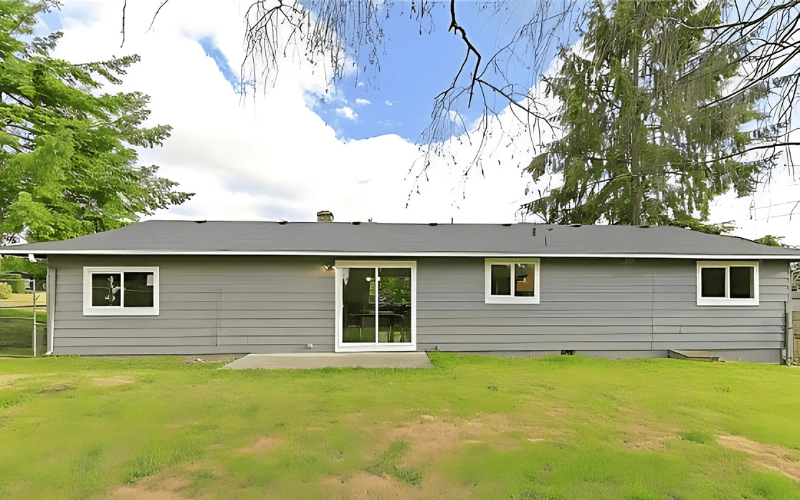Is a garden room worth the investment? If you’re considering adding extra space to your home, the answer is probably yes – but it depends on several factors. A garden room offers more than just extra square footage; it can improve your lifestyle, increase the value of your property and provide a versatile, low-maintenance solution.
In this article, we’ll explore the benefits and costs of a garden room, and the key factors to consider before investing. We’ll cover their long-term value, how they affect property values, and whether they meet your functional needs – whether that’s for work, leisure or entertainment. By the end, you’ll have a clear understanding of why a garden room could be the perfect addition to your home, and how to make the most of it.
What is a Garden Room?
A garden room is an independent, well-designed, insulated structure in your garden, separate from your main house. It can serve various purposes, such as a home office, gym, creative studio, or a relaxing space.
Garden rooms offer versatility with customizable designs to suit your style and needs. Unlike extensions, they require less construction, install quickly, and often don’t need planning permission, making them a hassle-free option for homeowners.
So, whether you’re looking for a peaceful spot to work or an extra space for hobbies, a Garden Room can offer the perfect solution, all while adding value and functionality to your property.
Why Garden Rooms Are Gaining Popularity
- More Space: Modern families need extra space for a variety of activities. Garden rooms offer a flexible solution to gaining the space you need without major engineering work, and are quicker and cheaper than a traditional home extension.
- Quick Installation & Low Cost: Compared to traditional extensions, Garden Rooms are much more affordable and take only days to install. This makes them an efficient and cost-effective choice for homeowners looking to expand their space without a big investment.
- Improved Quality of Life: With more people working from home, Garden Rooms provide a quiet, separate area for work, free from distractions. They also serve as multifunctional spaces for entertainment, hobbies, or relaxation, improving both your work-life balance and home environment.
Types of Garden Rooms
Garden Rooms come in many different styles and serve a wide range of purposes. Below are the most common types:
Garden Offices
As more people work from home, garden offices have become increasingly popular. These standalone rooms offer a peaceful and private workspace, away from household distractions. With the right insulation and electrical setup, a garden office can provide an ideal working environment year-round.
- Customization: You can equip your garden office with all necessary office equipment, lighting, heating, and Wi-Fi, turning it into a fully functional home office.
Garden Studios
Perfect for creative professionals or hobbyists, garden studios offer a space designed to inspire. Whether you’re an artist, photographer, writer, or musician, a garden studio provides the perfect environment with plenty of natural light and peace.
- Customization: The design can incorporate specialized lighting, soundproofing, and storage for creative tools and materials, as well as windows or skylights to allow ample sunlight to enter.
Garden Gyms
A garden gym enables you to workout in the convenience of your own home, eliminating the need to visit a commercial gym. These rooms are ideal for those looking to maintain a fitness routine but prefer a more private and convenient space.
- Customization: Features can include rubber flooring for shock absorption, mirrors for proper form, ventilation for fresh air, and even built-in audio systems for music.
Garden Lounges & Entertainment Spaces
If you want a relaxing retreat or a space for hosting friends and family, a garden lounge is the perfect choice. These rooms are designed for comfort and enjoyment, offering a cozy environment for reading, watching TV, or socializing.
- Customization: It frequently includes cozy furniture, lighting, and entertainment amenities such as a TV or sound system. A garden lounge can also be used for outdoor dining or as a space to enjoy your garden from inside.
Garden Annexes
A garden annexe is a fully functional living space built in your garden. It is more robust than a simple garden room, often featuring plumbing and electrical setups, making it suitable for long-term stays. These annexes are ideal for guests, family members, or as rental spaces.
- Customization: Can include a kitchen, bathroom, and bedroom, making it a fully independent living unit. This type of garden room can also be used as a rental property, adding value to your home.
Each garden room can be tailored to your unique needs. Whether for work, creativity, fitness or leisure, a garden room can be designed to enhance your lifestyle and increase the value of your property.

Functions and Advantages of a Garden Room
| Advantage / Function | Description |
| Extra Usable Space | It can serve multiple purposes such as an office, gym, studio, guest room, etc., providing versatility. |
| Increased Property Value | Can increase property value by 5%-15%, making it more attractive to buyers. |
| Privacy and Separation | It offers a separate, tranquil space detached from the main house, ideal for work or relaxation. |
| Natural Light and Connection to Nature | Large windows allow natural light to pour in and offer stunning views, fostering a stronger connection to the garden. |
| Cost-Effective Alternative to Extensions | More affordable and quicker to build than traditional extensions. |
| Flexible and Adaptable | It can be repurposed for various functions, including an office, art studio, gym, or playroom. |
| Energy Efficiency | Well-insulated, making it comfortable year-round with lower energy costs. |
| Low Maintenance | Constructed from sturdy materials such as steel or composite, it necessitates minimal maintenance. |
Cost Breakdown: How Much Does a Garden Room Cost?
The cost of constructing a Garden Room can fluctuate based on its size, design, and features. Typically, you can anticipate spending between £10,000 and £30,000 for a standard garden room.
- Size: Larger Garden Rooms will incur higher costs due to the increased demand for materials and labor. Typically, the price increases by £1,500 to £2,500 per square meter.
- Materials: The selection of materials can also affect the overall cost. Premium materials like high-quality timber cladding, steel structures, or specialized insulation will increase the overall cost.
- Features: Optional features such as electrical wiring, plumbing, or heating will add to the cost. If you plan to use the Garden Room as a fully functional living space, expect to pay more for these upgrades.
- Customization: Tailoring the design to suit your specific needs (such as extra windows, skylights, or bespoke finishes) can also raise the price.
Comparison with Traditional Extensions
Compared to a traditional home extension, a Garden Room is a more affordable option. Home extensions can cost between £30,000 and £60,000, depending on size and complexity, and often require more planning, structural work, and permits. The installation process for a Garden Room is much quicker and usually doesn’t require planning permission, saving you both time and money.
How Much Value Can a Garden Room Add to My Property?
When considering a Garden Room, one of the key questions is how much it can increase your property’s value. A thoughtfully designed Garden Room, particularly one with modular steel structures, can substantially increase your home’s value, making it a prudent investment in the long term. Let’s explore the potential value it can add.
Property Value Increase
Depending on factors such as construction quality, materials used, and how seamlessly it integrates with your property, a Garden Room can elevate your home’s value by 5% to 15%. For a home valued at £300,000, a Garden Room could add £15,000 to £45,000. In certain cases, particularly in high-demand markets, the increase could reach up to 20%.
Attracting Potential Buyers
Garden Rooms make your property more attractive to potential buyers, especially as more people seek extra space for home offices, gyms, or studios. They offer valuable extra space that’s separate from the main house, ideal for those seeking a quiet, private area.
Return on Investment (ROI)
The ROI for a Garden Room is typically favorable, offering up to 200% return. For example, spending £20,000 on a Garden Room could increase your property’s value by £40,000 or more. With modular steel construction, the room’s durability, energy efficiency, and long-term value make it an attractive option for buyers.
Influencing Factors
Several factors affect how much value a Garden Room can add to your property:
- Functionality and Flexibility: The value of a Garden Room is increased by its functionality. A Garden Room offers extra functional space, whether it’s used as a home office, a studio, or a guest suite. A garden annex with plumbing and electricity can even provide an income-generating rental unit. Modular steel structures ensure durability and flexibility, making the room adaptable for various needs, whether personal or for extra revenue.
- Location Influence: The location of your property plays a significant role in how much value a Garden Room can add. In urban areas where space is limited, a Garden Room can significantly enhance the property’s value. In rural or suburban areas, the value boost might be smaller, but it still adds functionality that can make your home more appealing.
Is a garden room a good investment?
Yes. It not only adds extra space and functionality but also delivers a significant return on investment. When compared to traditional home extensions, Garden Rooms are more economical, faster to install, and need less maintenance.
For homeowners looking to increase the value of their property, add versatile living space, or create a functional area like a home office or studio, a Garden Room is a smart, cost-effective investment that can deliver significant long-term benefits.

Choosing the right garden room: what to consider before building
Building a Garden Room can significantly enhance your living space, but before starting, it’s essential to consider planning permissions, design compatibility, and long-term maintenance to ensure a successful, lasting addition to your home.
Planning Permission and Regulations
Prior to construction, verify whether your Garden Room necessitates planning approval. Generally, Garden Rooms under 30 square meters and located 1 meter away from property boundaries do not need permission. However, there are exceptions if your property is located in a conservation area, or if the structure exceeds 2.5 meters in height, or incorporates substantial plumbing or electrical installations.
Even in the absence of planning permission, it is imperative to adhere to building regulations to guarantee safety and efficiency. These cover structural integrity, electrical safety, insulation, and fire safety. Adhering to these regulations prevents future legal or safety issues and guarantees a high-quality finish.
Design and Size Considerations
The design of a Garden Room must consider far more than just style. A poorly planned room can reduce garden usability, violate setback rules, or clash with the property’s visual harmony.
Site Orientation:
- Maximize natural light by placing windows and glazing on south- or west-facing walls.
- Minimize overheating by considering external shading, overhangs, or treated glazing if the room gets full-day sun.
- Ensure proper drainage gradients around the structure to avoid surface water pooling.
Integration with Existing Property:
- Match or complement cladding and external finishes to your main house or landscape design. Modern modular builds with powder-coated steel, composite cladding, or timber-look aluminium offer both visual appeal and durability.
- The Garden Room should not appear “tacked on” or oversized. A room that overwhelms a small garden can reduce the usable green space and even impact property value negatively.
Structural Considerations:
- Steel-frame modular systems offer dimensional stability, precision fit, and are highly resistant to rot, insects, and moisture—ideal for long-term use in varied climates.
- Ensure the foundation system (e.g. screw pile, concrete slab, or steel chassis on pads) is matched to soil conditions and structural load.
Maintenance Requirements
Though Garden Rooms generally require less maintenance than traditional extensions, regular upkeep is still necessary. To minimize future maintenance, choose low-maintenance materials like composite cladding or steel framing, which are durable and weather-resistant. These materials reduce the need for frequent treatments, such as painting or sealing, commonly needed for wood-based materials.
Additionally, insulation and ventilation are key to maintaining comfort and preventing issues like moisture buildup or mold. For timber, regular care is essential, including sealing and treating to prevent decay, rot, and pests. Ensuring proper drainage and waterproofing is essential for maintaining the longevity of the Garden Room.
By addressing design, permissions, and maintenance considerations at the outset, you can guarantee that your Garden Room remains a resilient, functional, and aesthetically pleasing addition for many years to come.
Should You Remodel, Build New, or Go DIY for a Garden Room?
Not sure how to create your ideal garden room? We’ll show you three different methods to help you choose the best option for you.
1. Remodeling an Existing Structure
Pros:
- Cost-Effective: Remodeling an existing shed, garage, or other outbuilding is usually less expensive than starting from scratch.
- Time-Saving: It may take less time than building a new structure.
- Less Disruption: If you’re working with a pre-built structure, the process might be less invasive than a full build.
Cons:
- Limited Space and Design: You may be limited by the existing structure’s size and layout, making it difficult to fully customize.
- Condition of Existing Structure: If the structure is old or in poor condition, extensive repairs or upgrades may be required, adding to the cost.
Best for: Homeowners with an existing structure that can be easily adapted to meet their needs with a bit of modification.
2. Building New
Pros:
- Customizable Design: You have complete freedom to design the Garden Room according to your needs and preferences, whether it’s a home office, studio, or guest room.
- Better Integration: A new build can be designed to perfectly complement the existing property and garden space.
- Increased Value: A well-built Garden Room can increase your property’s value, particularly if you’re building a high-quality structure with modern materials.
Cons:
- Higher Cost: Building from the ground up is more expensive than remodeling.
- Longer Construction Time: A new build typically takes longer to complete, especially if planning permission is required.
Best for: Homeowners who want a fully customized, high-quality Garden Room that matches their exact requirements.
3. DIY Garden Room
Pros:
- Cost Savings: Doing it yourself can significantly reduce labor costs.
- Personal Satisfaction: Building your own space offers a sense of achievement and allows for personal touches.
Cons:
- Time-Consuming: DIY projects can take longer, especially if you lack experience.
- Requires Skill: It’s important to have basic construction skills or be willing to learn. Missteps in electrical work, insulation, or foundation could lead to future issues.
- Quality Control: Without professional help, you may end up with a less durable or properly insulated structure.
Best for: Those with basic construction skills, time, and a smaller budget, who are willing to invest the effort into a project.

Unlock your home’s full potential with a garden room
Our modular garden rooms offer durability, energy efficiency and low maintenance construction, ensuring your garden room remains functional and stylish for years to come. Whether you have a garden office studio or a garden gym pod, our customisable designs give you the freedom to create exactly what you need.
Don’t just imagine it – make it real. Invest in a modular garden room today and experience how this simple but transformative addition can unlock more space, more potential and more value for your home.
FAQs
What are the disadvantages of a garden office?
Disadvantages of a garden office include:
- Initial cost: Garden offices can be expensive to build, especially for larger, fully-equipped rooms.
- Limited space: Small garden offices may not have enough room for large equipment or multiple people.
- Weather exposure: Since they’re outside, they can be affected by weather conditions if not well-insulated or waterproofed.
- Distance from the home: It may feel inconvenient to walk to the office in bad weather or at night.
What is the lifespan of a garden room?
A garden room usually lasts 20 to 30 years, depending on the materials and maintenance. A good quality garden room, especially one built with a steel frame or composite cladding, can last much longer.
Can I occasionally sleep in my garden room?
You can occasionally sleep in your garden room, but it’s important to check local building regulations. If you plan to use it for regular sleeping accommodation, it may need to meet specific building codes for insulation, ventilation, and safety. Garden rooms built for work or leisure often aren’t equipped for full-time living.

